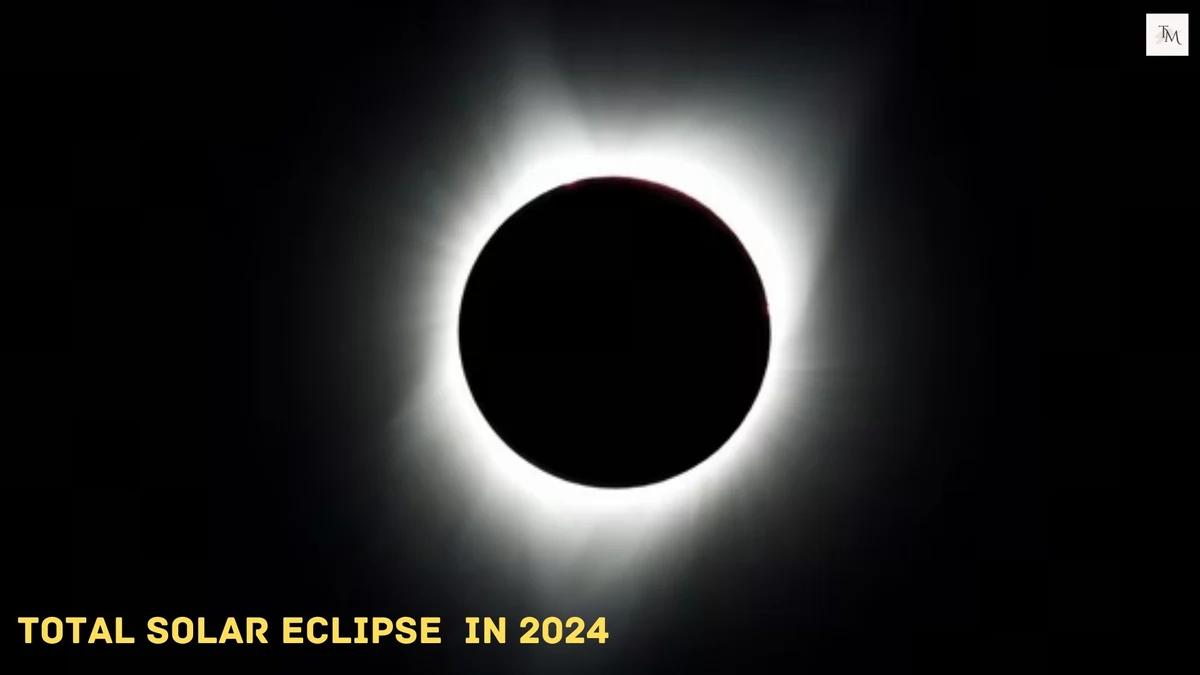Total Solar Eclipse: Attention astronomy and stargazing enthusiasts! Prepare for this year’s most important astronomical event: the total solar eclipse that will grace the night skies.
The eclipse will pass through Canada, Mexico and the United States as it crosses North America. Remember that Indians won’t be able to see this eclipse despite all the excitement. Scientists acknowledge, however, that this type of eclipse is very rare.
A total solar eclipse occurs when the moon completely blocks out the Sun as it moves between the Earth and the Sun. Just like sunrises and sunsets, the sky will darken. Here’s all you need to know, from the date to the timings.
Date And Time Of The Total Solar Eclipse in 2024
The total eclipse, which will occur on April 8, 2024, in North America, will pass over Canada, Mexico, and the United States. NASA predicts that the total eclipse will begin over the South Pacific Ocean.
The moon’s shadow will completely cover the Sun for observers in the path. The eclipse will last three to four minutes for those on the path. NASA reports that the Pacific Coast of Mexico, at 11:07 am PDT, will be the first part of continental North America to see totality.
The shadow of the moon will move northeast at 1:27 pm CDT. As it crosses the country diagonally, the path will cut through Oklahoma, Arkansas, Missouri, Illinois, Kentucky, Indiana, Ohio, Pennsylvania, New York, Vermont and New Hampshire.
The eclipse is expected to pass through Maine, United States, at 15:35 Eastern Daylight Time (EDT) before moving into the Maritime Provinces of Canada.
According to the Great American Eclipse website, the longest duration near Torreon in Mexico will be four minutes and 27 seconds, nearly double the 2017 time.
How to Watch:
When viewing a solar Eclipse, safety is of paramount importance. Even partially looking at the Sun can result in permanent eye damage. Enjoy the show without risk:
- Use certified solar eclipse glasses: These glasses filter harmful solar radiation and allow you to view the eclipse comfortably. Never wear sunglasses, normal eyeglasses or homemade filters.
- Projecting the eclipse: Use a pinhole camera or a telescope equipped with a solar filter to observe the eclipse in a projector safely.
- Find an event to view the eclipse: Many organisations, astronomy clubs and other groups host safe viewing events with educational materials and telescopes.
Why is this Total Solar Eclipse Rare?
About every 18 months, the moon will pass between the Earth and the Sun, blocking the light of the Sun for a short time and causing an eclipse.
It would not be easy to find a place on land where you could observe this celestial phenomenon, as the oceans cover over 70% of our planet. Even rare is observing a solar eclipse from a nearby location, saving you the trouble of travelling long distances or even continents.
What are The Differences Between Total Solar Eclipses And Other Solar Eclipses?
Solar eclipses can take many forms. They include annular, partial, and total eclipses. A total eclipse is when the ethereal Sun’s corona appears.
In her essay “Total Eclipse, ” Annie Dillard aptly described the difference between a partial solar eclipse and kissing a guy compared to a more profound experience such as witnessing a complete eclipse.
SEE MORE: Know About Stephenson 2-18, The Biggest star in Our Universe










